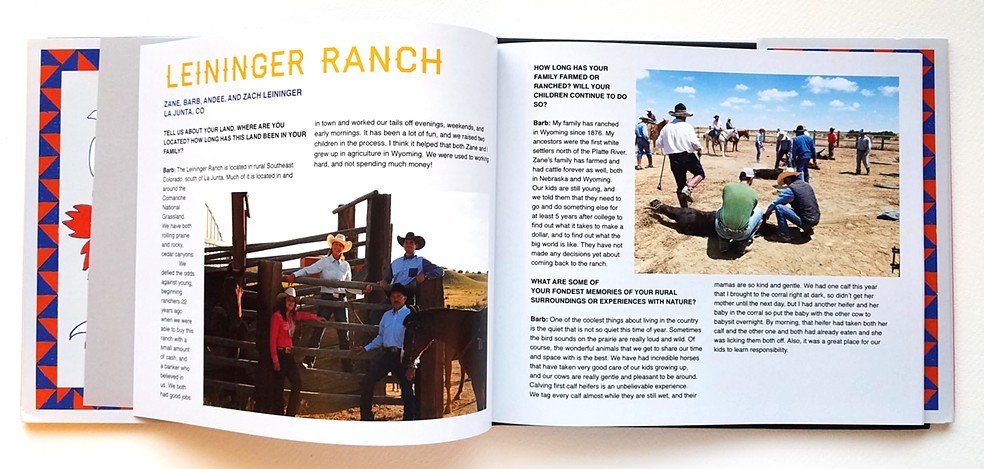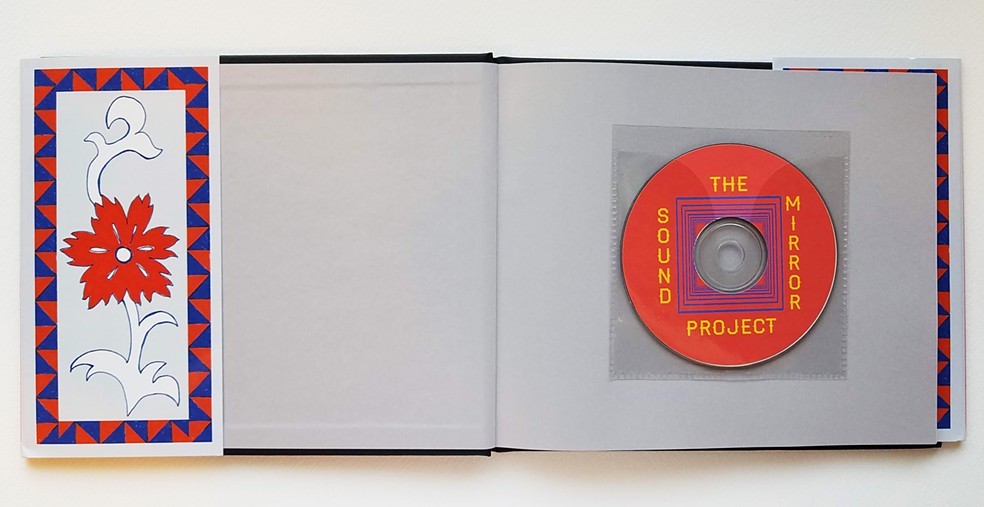Story originally posted to SOURCE by Jordyn Malmstrom.
This year, six Colorado State University alumni from the Department of Art and Art History had their artwork featured in the Art of the State 2019 juried exhibition at the Arvada Center, which aims to feature the art of critically acclaimed Colorado artists. This comes as a follow-up to the Art of the State exhibit in 2013.
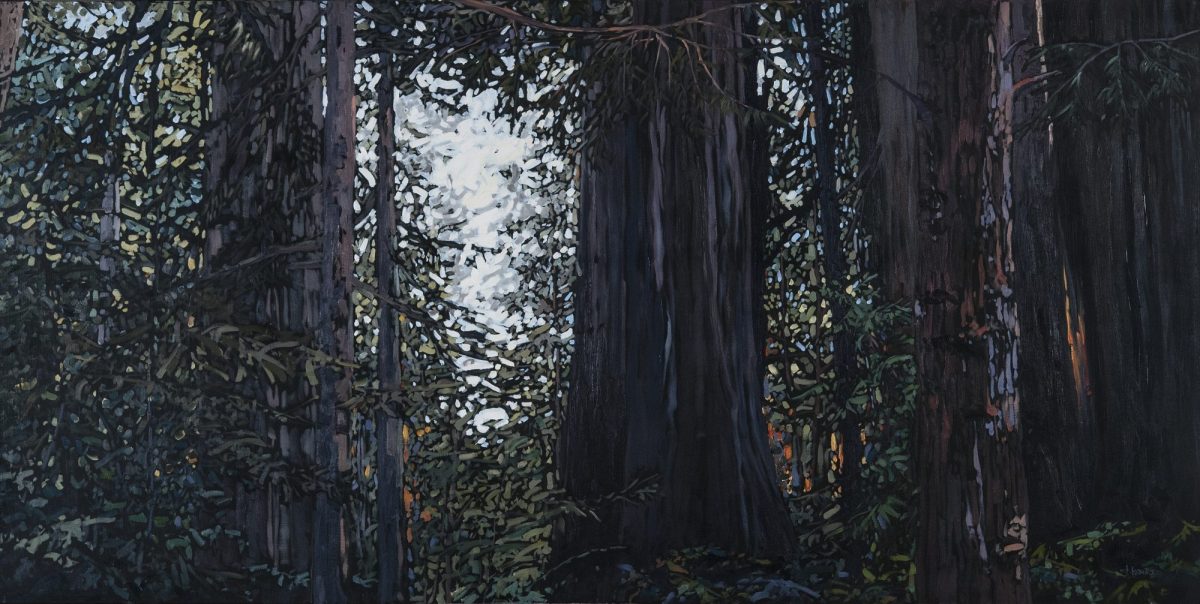
Deb Komitor
Master of Fine Arts, 1983
After graduating from CSU, Deb Komitor moved back to her hometown of Columbus, Ohio. But her love for Colorado pulled her and her husband back to the state in 1996, three years after she decided she would focus on her artwork fulltime. Komitor notes working individually is something that has taught her how to truly express herself and stay tenacious in this line of work. “I feel like it took me until my 50’s to paint the way I always dreamed of,” said Komitor. “Now in my early 60’s, my work is being recognized and supported.”
Her piece Shining Through (above), was featured at the Arvada art exhibition this year. The piece, she notes, is to remind people of the healing power of trees and the connection humans feel to the world around them. “I want people to feel that they can enter my paintings, breathe in the surroundings, hear the sounds of the deep woods, feel the hope in the light through the trees, and surrender to peace.”
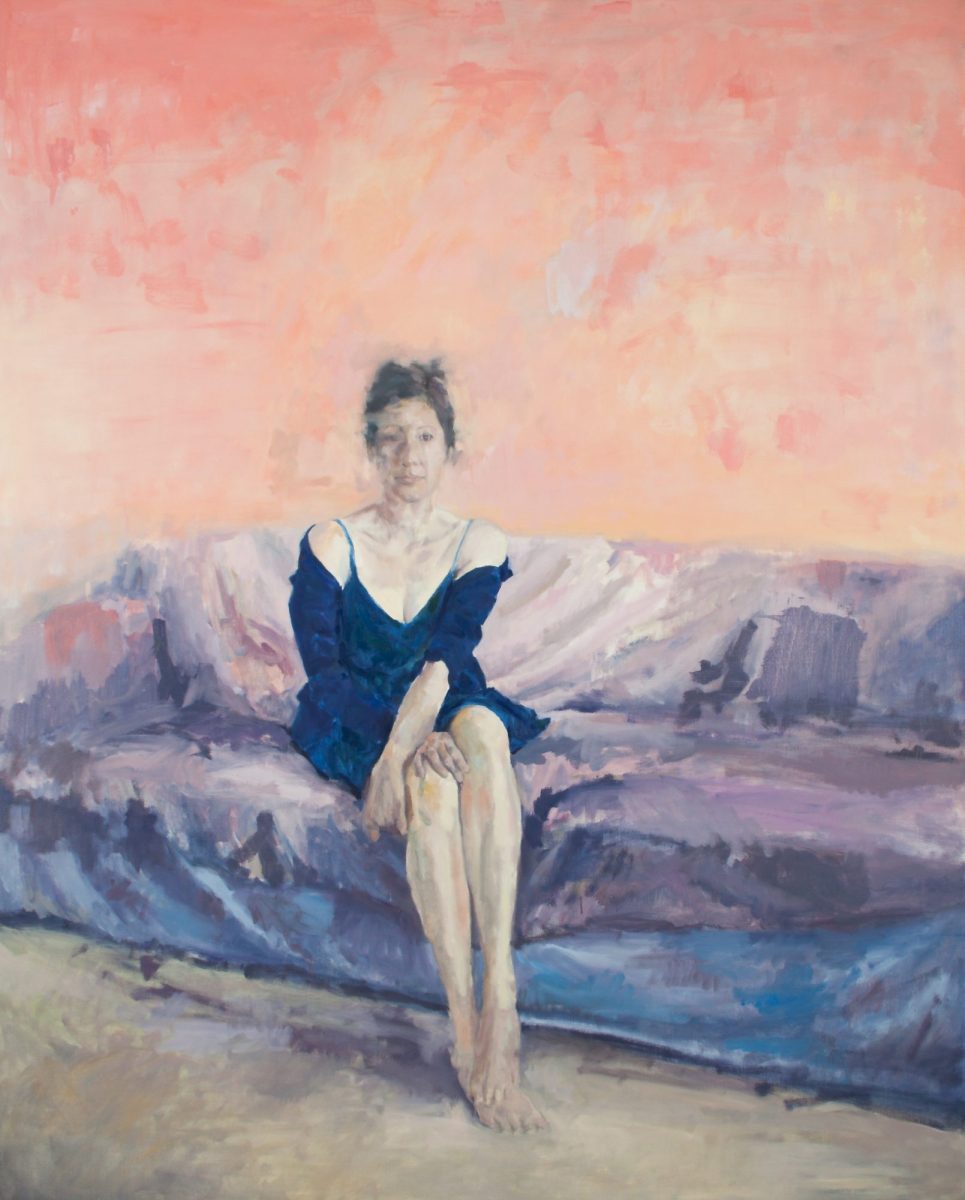
Micheal Richins
Bachelor of Fine Arts, 2000
Upon graduating from CSU, Michael Richins maintained his connection to the University and was hired as a full-time employee in the Interlibrary Loan department at the Morgan Library. Today, he continues to work with libraries as the manager of the RapidILL training and support team, a service developed by CSU library staff that aims at providing libraries around the world an affordable and high-quality resource sharing system.
Richins’ artwork pulls from his primary inspiration: his wife, Mandy, and their two daughters. “My paintings are an attempt to depict the beauty found in daily and routine occurrences, and in the sensual and dynamic nature of a long-term relationship,” said Richins. While the title of the piece signifies something to him and his wife Mandy, who is featured in the painting, they choose to let the audience interpret its meaning through their personal experience while viewing it.
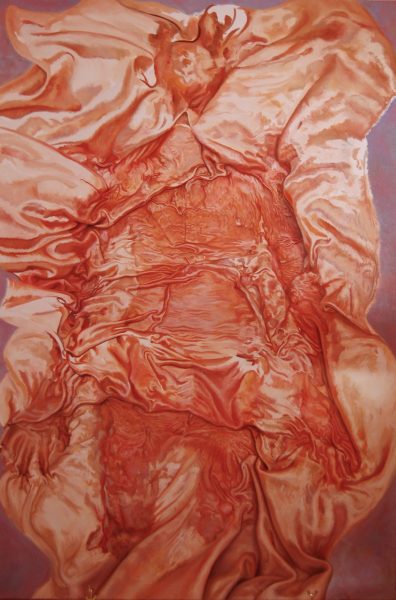
Irene Delka McCray
Bachelor of Fine Arts, 1975
After returning to Boulder once she graduated from CSU, Irene Delka McCray let the world around her, as well as the body itself, inspire her artwork. Eventually, McCray moved to New Mexico to continue her artwork. While the landscape of Colorado has always been a large part of her work, once she moved to New Mexico she began incorporating natural elements of fire, water, clouds, and earth as the backdrop into her paintings as well. But she never lost her fascination with the human body in its natural state. She has a decade-long history of teaching art in New Mexico and has been featured in several museums and venues around Colorado, New Mexico, and California. She now resides back in Colorado as professor emeritus at Rocky Mountain College of Art and Design.
Her piece What is Left aims to signify the human existence and imprint in the world around us through the use of body and cloth. “The images are conceived as intimate records of physical presence, people who were there and are no more,” notes McCray. “I mean them to be characterizations of the struggle to embrace the departure and continued presence of those not physically here and for the images to have beauty in their mystery.”
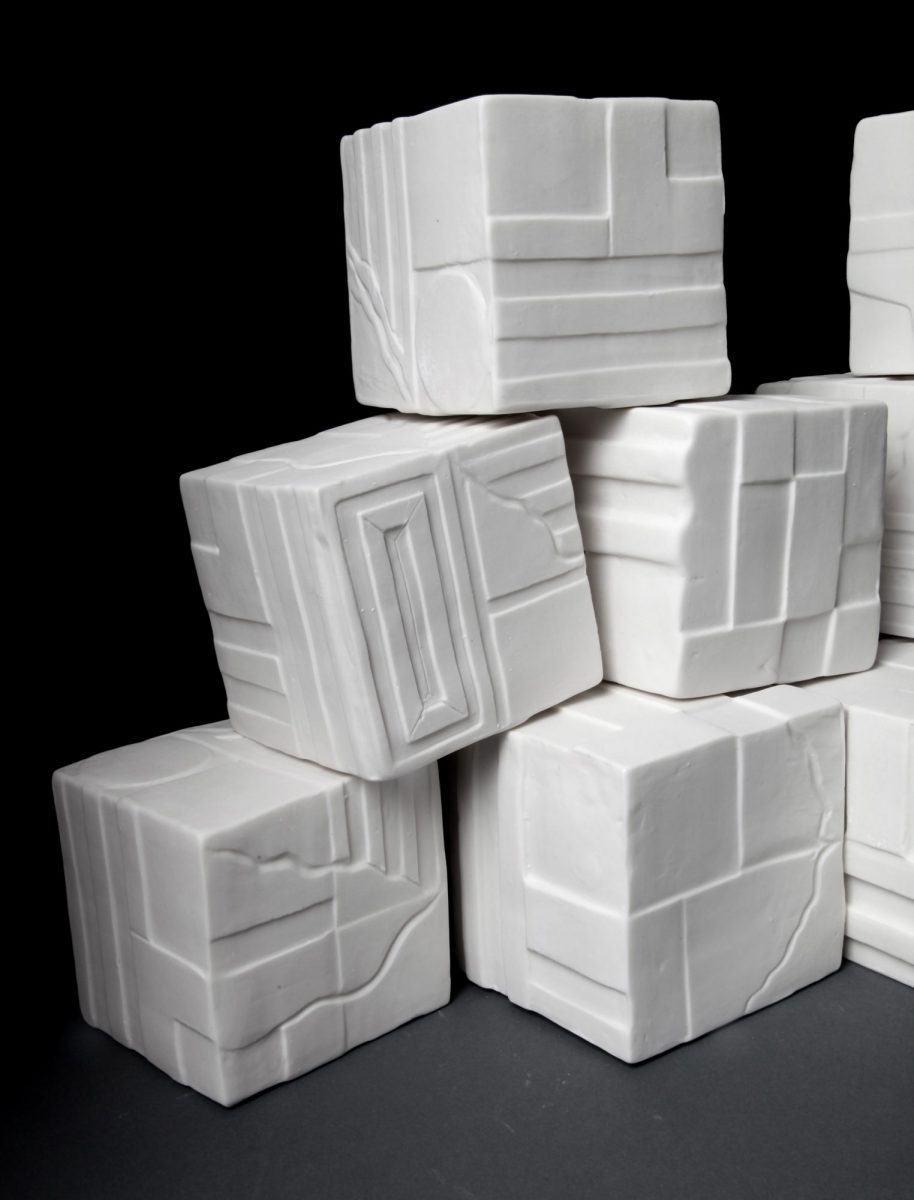
Chandler Romeo
Bachelor of Fine Arts, 1982
With more than 37 years in Denver after graduating from CSU with a concentration in ceramics, Chandler Romeo has established her art career with exhibitions in several local and regional venues around the city. Additionally, Romeo’s private and public collections are featured in venues across the country. Her current work focuses on the Western landscape and how it has been affected by human interference.
Her piece Dakota: Geographic Tattoos is part of a series she has been working on for more than a decade. The specific piece is centralized on the aerial view of a farmland in North Dakota, which is where the name ‘Dakota’ originated. In regards to ‘Geographic Tattoos,’ Romeo notes it is more difficult to interpret. “It occurred to me recently that the resulting imagery of carved and plowed fields, roadways, and linear elements such as fences and property lines, have a similarity to tattoos on skin,” said Romeo. “The marking and carving of the landscape is a permanent alteration, as is a tattoo.”
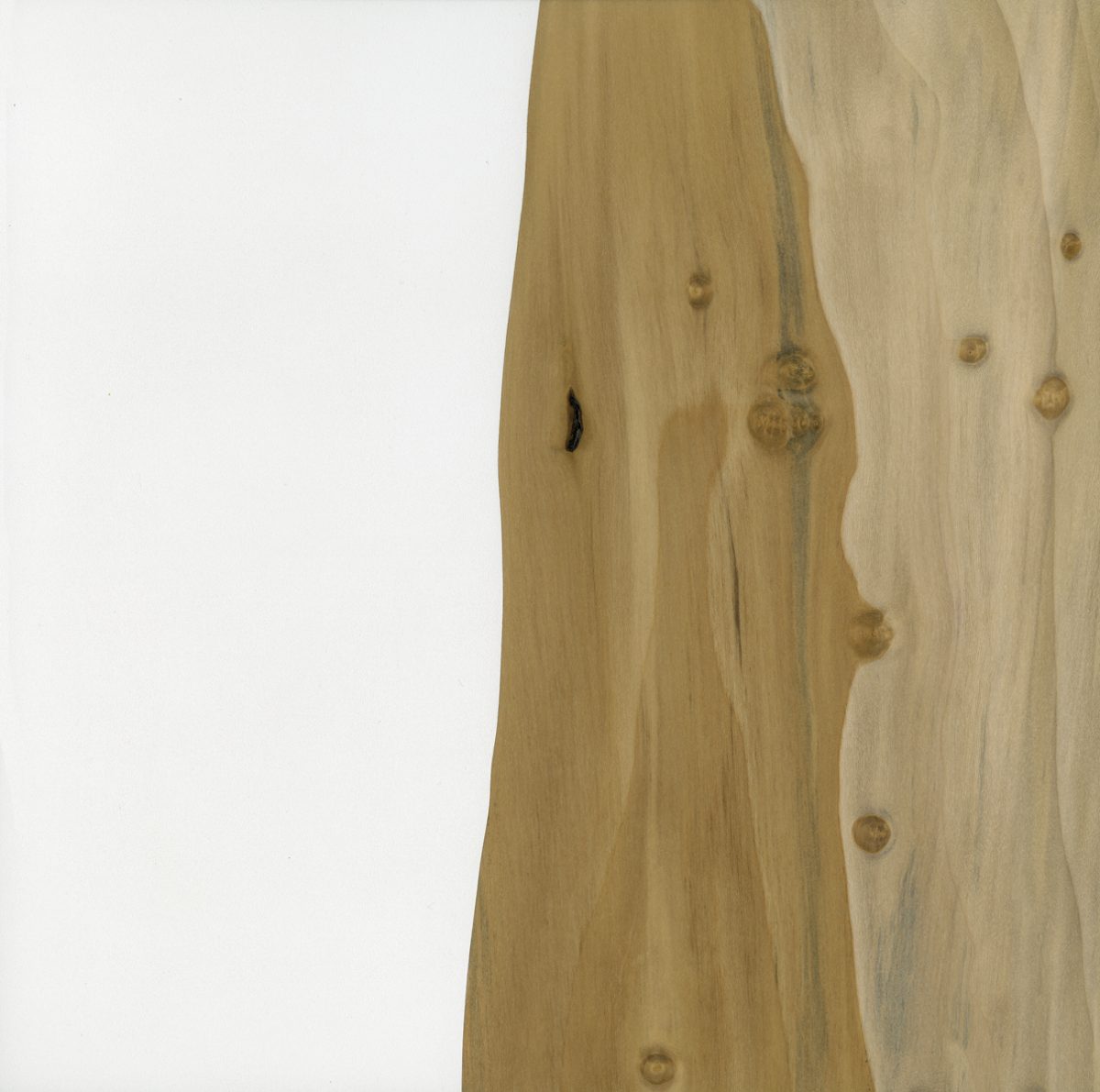
Corey Drieth
Bachelor of Fine Arts, 2000
With two undergraduate degrees from CSU, Corey Drieth’s art career has always been centralized in Fort Collins. After graduating with a B.A. in philosophy and a minor in painting in 1992, Drieth traveled both in and out of the country learning how he wanted to live his life. Upon returning to Fort Collins, Drieth met artist Bill Wylie in a bookstore. After seeing Wylie’s photographs, as well as CSU art professor Richard DeVore’s works, Drieth realized that his dream of becoming an artist was possible. He returned to CSU to pursue this dream, getting his BFA in pottery in 2000. While studying pottery, DeVore asked Drieth to teach two pottery classes, something he notes defined the direction his life would take.
Dreith’s work is inspired by his love of material (wood, primers, paint, etc.) and comparative religious studies, a concentration of his philosophy degree during his initial studies at CSU. The piece Transmigration takes concepts, both metaphorical and poetic, from various concentrations in life. “Transmigration refers to the movement of the soul from one body to another after death,” said Dreith, centralized to the idea of reincarnation. “I want my work to feel both intimate and familiar, but also strange and mysterious. I want it to feel delicate, yet stable, lyrical yet iconic, and I want my work to offer subtle movements of discovery.”
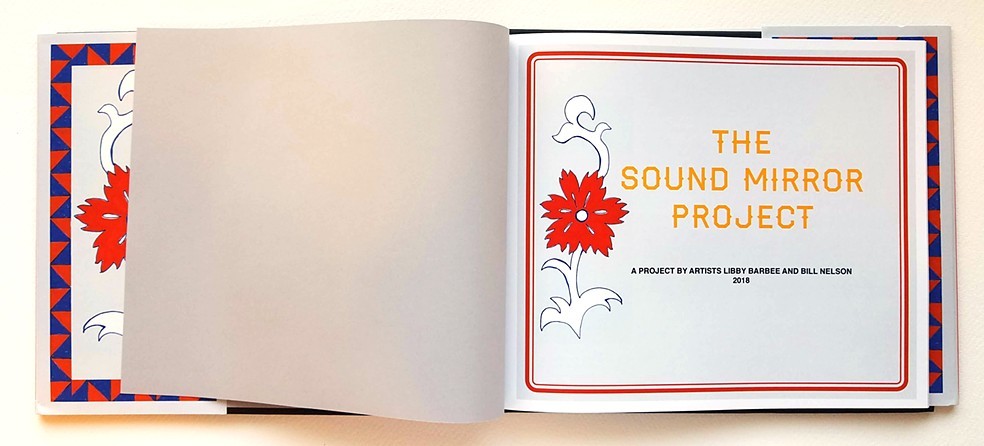
Libby Barbee
Bachelor of Fine Arts, 2006
Two years after getting her bachelor’s degree at CSU, Libby Barbee was accepted to the master’s program at Maryland Institute College of Art in 2009. But nearly four years later, she and her husband moved to Denver where she was accepted into a two-year artist-in-residence at RedLine. During this time, Barbee began working with RedLine’s education department, where she works as the regranting manager.
Barbee’s work The Sound Mirror Project consists of photographs and audio compilations, almost all of which are compiled into a book (above). This collaboration between Barbee and artist Bill Nelson aims to address the human experience shared in rural and urban areas, notifying the responsibility humans have to take care of the natural world that surrounds them. “Differences may exist on either side of this equation – from politics to stances on organics – but undebatable is a common desire to protect our land as a whole… its soil, its water, its seeds. We’re in this together,” notes Barbee in her portfolio on the project.
The project’s inspiration, both in the sculpture mirrors and audio compilations, derive from acoustic devices that were once used in wartime before things like radar detectors to locate ships passing by were invented, according to Barbee in her explanation of the project. “Our own ‘mirrors’ present sounds of nature through perspectives of Colorado farmers and ranchers, whose hard work not only puts food on all of our tables but, as important, ensures the land continues to feed us for generations to come.”
The Arvada Center’s Art of the State 2019 recently ended its juried exhibition in March.
The Department of Art and Art History is in Colorado State University’s College of Liberal Arts.
